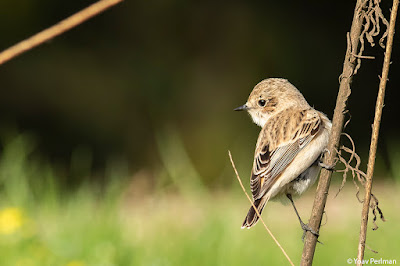2021 ended with a bang, and 2022 started in a very different tempo. First, I made a sort of new year resolution, not to do another Big Year. After two years in a row, I think I had enough. My family needs me back, and I need to invest more in my new position at work. Also, with the bird flu outbreak here (see recent articles in National Geographic and BirdLife International website), I am really very very busy. I am maintaining my checklist streak (880 days today), which leads me to 'rediscover' my local birding sites, those that can be combined with school run and dog walk. In 2021, as a result of me being all over, I neglected my local birding. So this return to the basics is welcome, at least for now, until I get itchy again...
January perhaps isn't the most dynamic month of the year, but there's still plenty to see locally. Especially on days with lovely sunshine, like today was, birds are singing, everything looks very lush and green, and it's so pleasant to be outdoors. This morning's birding along Nahal Ekron produced the expected stuff (eBird checklist here). It's a good winter for Siskin, and several small groups flew by, as they do every day here this winter. The small seasonal wetland at the western section holds water and ducks, which is nice. Interestingly, two Siberian Stonechats took up winter residence here, separately. They are common enough autumn migrants but pretty uncommon in winter. They are holding small territories about 1 km from each other. The male is a maurus-type, haven't managed to get a photo of him yet. The female, no idea what her taxon is, is more tolerant to humans as its territory is right on a main and busy footpath, adjacent to housing estates, very popular with dog walkers, runners, cyclists etc. I spent a few minutes with it this morning. At first perhaps my attention made her quite nervous. However, after few minutes, she lost interest in me and went on with her stuff, i.e. catching bugs. Lovely little bird.











No comments:
Post a Comment